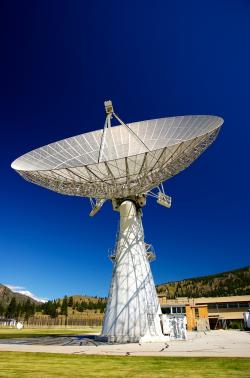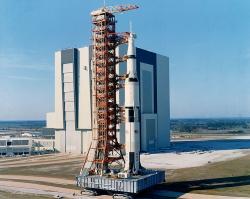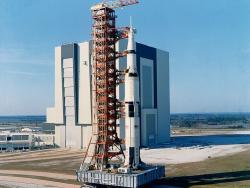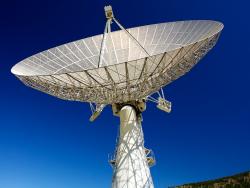On the morning of 17 April 1967, radio astronomers used this radiotelescope at DRAO and a second one at the Algonquin Radio Observatory located 3074 km away to make the first successful radio astronomical observations using Very Long Baseline Interferometry. Today, VLBI networks span the globe, extend into space and continue to make significant contributions to both radio astronomy and geodesy.
1967


The largest rocket built at the time of the historic first missions to the moon, the Saturn V carried aloft the 45-ton Apollo spacecraft on earth orbital and lunar missions from 1967 to 1972. It also launched the 120-ton Skylab into earth orbit on May 14, 1973.
Established between 1967, the Honeysuckle Creek Tracking Station, along with the Tidbinbilla and Orroral Valley sites, supported NASA’s Deep Space Network, Manned Space Flight Network, and Spacecraft Tracking and Data Acquisition Network. The stations played a key role in supporting the Apollo 11 moon landing, with the Honeysuckle Creek facility providing the first historic pictures of man walking on the moon on July 20, 1969 (July 21st in Australia), as well as providing voice and telemetry contact with the lunar module.
Innovations
Established between 1967, the Honeysuckle Creek Tracking Station, along with the Tidbinbilla and Orroral Valley sites, supported NASA’s Deep Space Network, Manned Space Flight Network, and Spacecraft Tracking and Data Acquisition Network. The stations played a key role in supporting the Apollo…
Read More
The largest rocket built at the time of the historic first missions to the moon, the Saturn V carried aloft the 45-ton Apollo spacecraft on earth orbital and lunar missions from 1967 to 1972. It also launched the 120-ton Skylab into earth orbit on May 14, 1973.
Design and…

On the morning of 17 April 1967, radio astronomers used this radiotelescope at DRAO and a second one at the Algonquin Radio Observatory located 3074 km away to make the first successful radio astronomical observations using Very Long Baseline Interferometry. Today, VLBI networks span the globe,…
Read More

